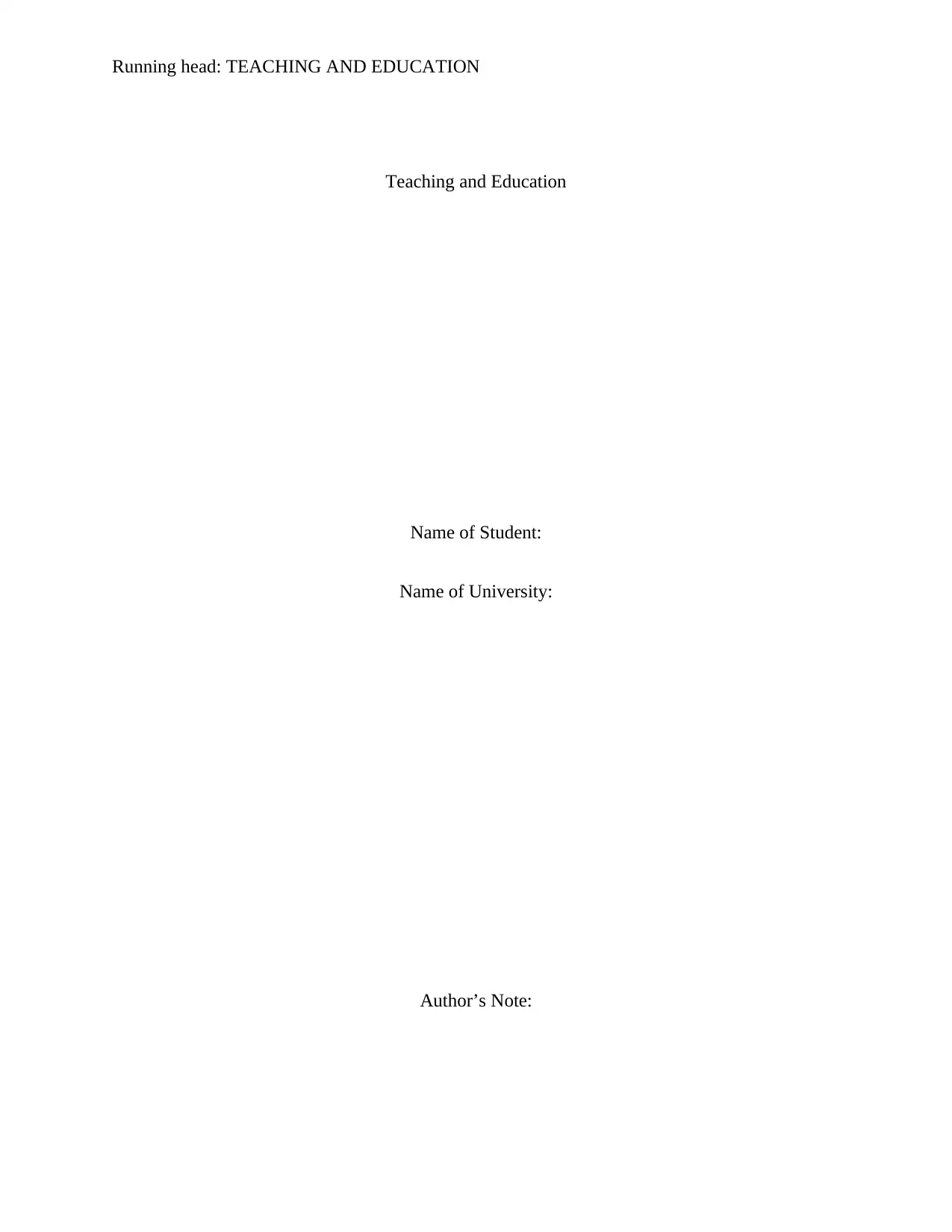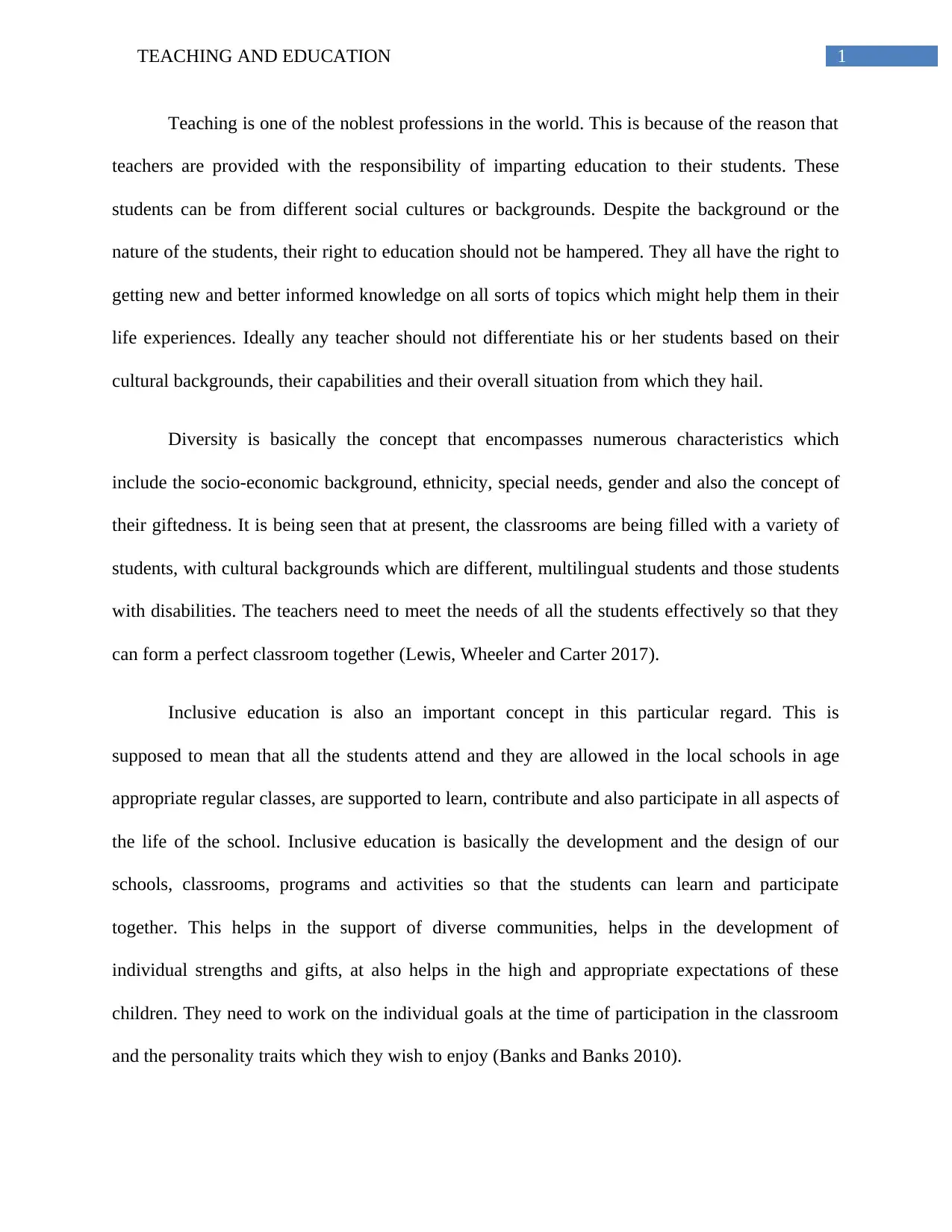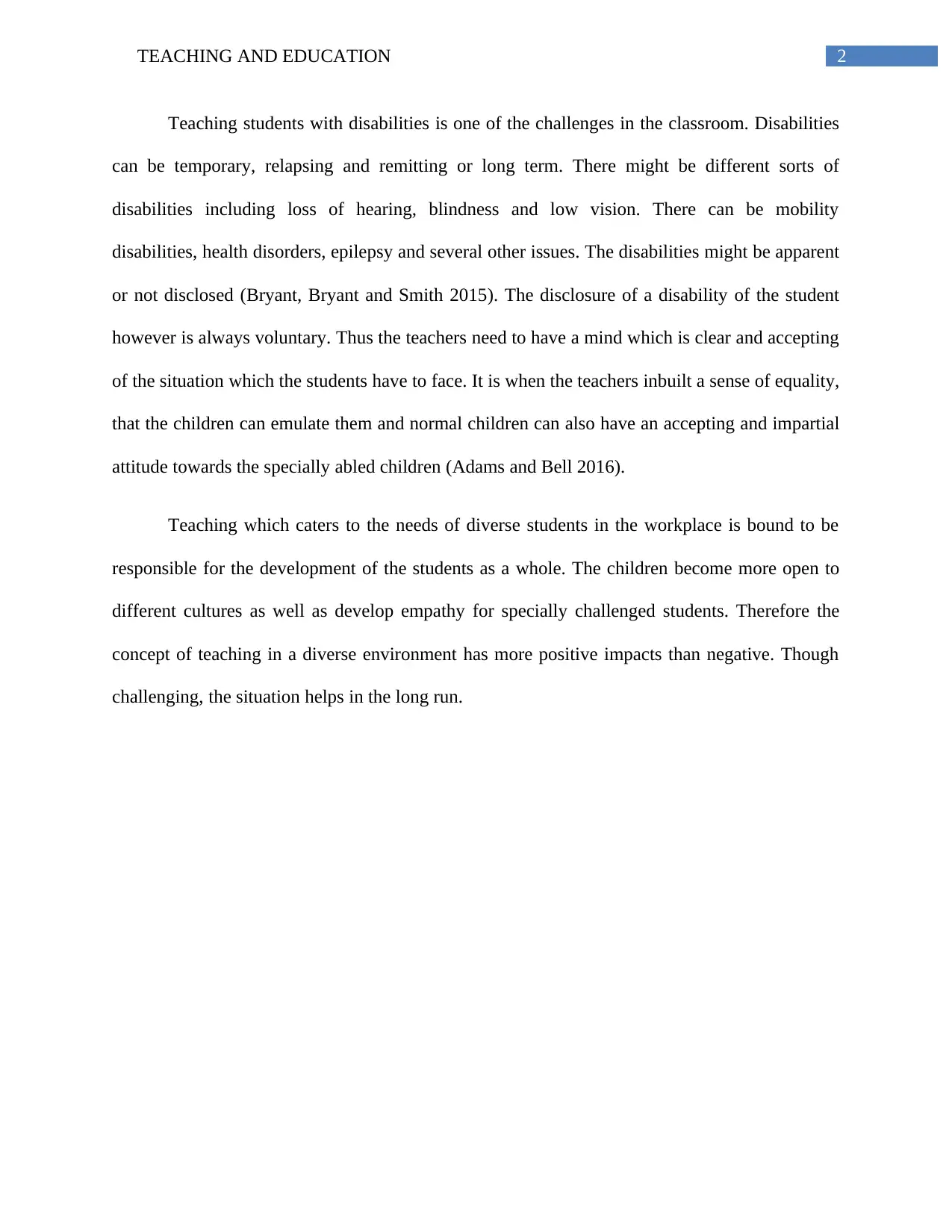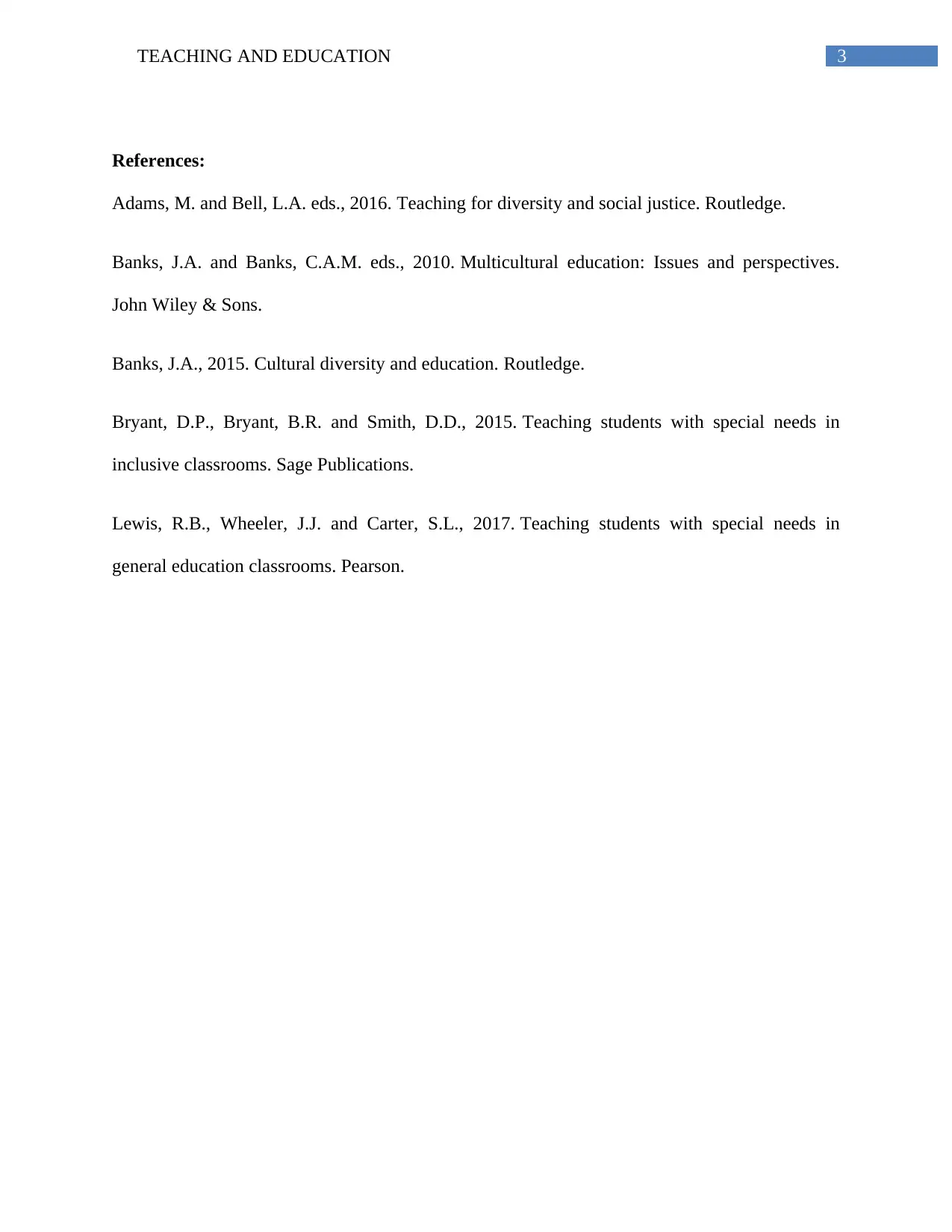Diversity in Education: Inclusive Teaching Strategies for All Learners
VerifiedAdded on 2023/06/15
|4
|724
|57
Essay
AI Summary
This essay explores the critical role of teachers in fostering diversity and inclusive education within classrooms. It emphasizes the importance of addressing the needs of students from various cultural backgrounds, multilingual learners, and those with disabilities. The essay highlights inclusive education as a model where all students, regardless of their differences, are supported to learn, contribute, and participate in all aspects of school life. It also addresses the challenges of teaching students with disabilities, stressing the importance of equality and acceptance. Ultimately, the essay argues that teaching in a diverse environment promotes empathy, cultural openness, and overall development among students, leading to a more inclusive and equitable educational experience. Desklib offers more resources like this to aid student learning.
1 out of 4









![[object Object]](/_next/static/media/star-bottom.7253800d.svg)